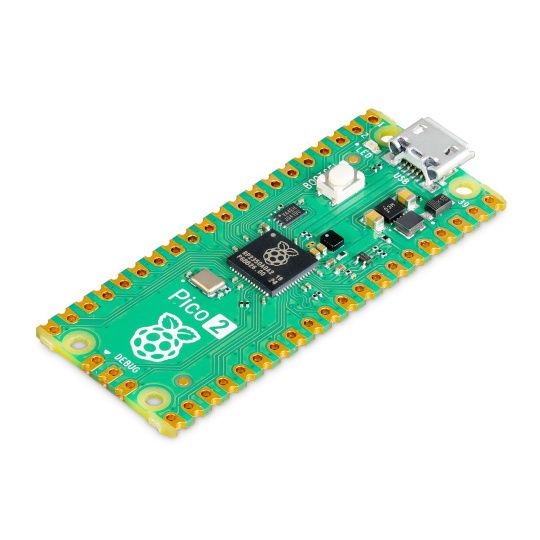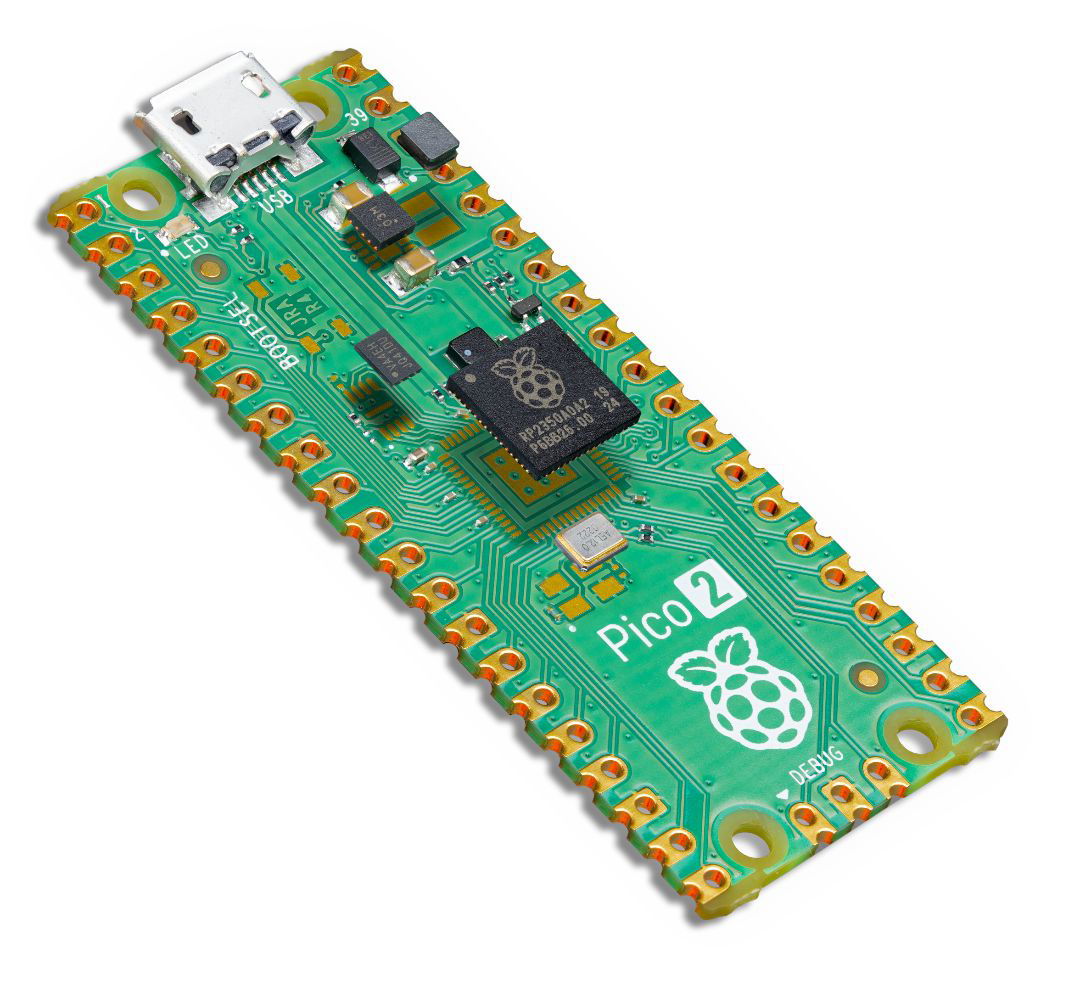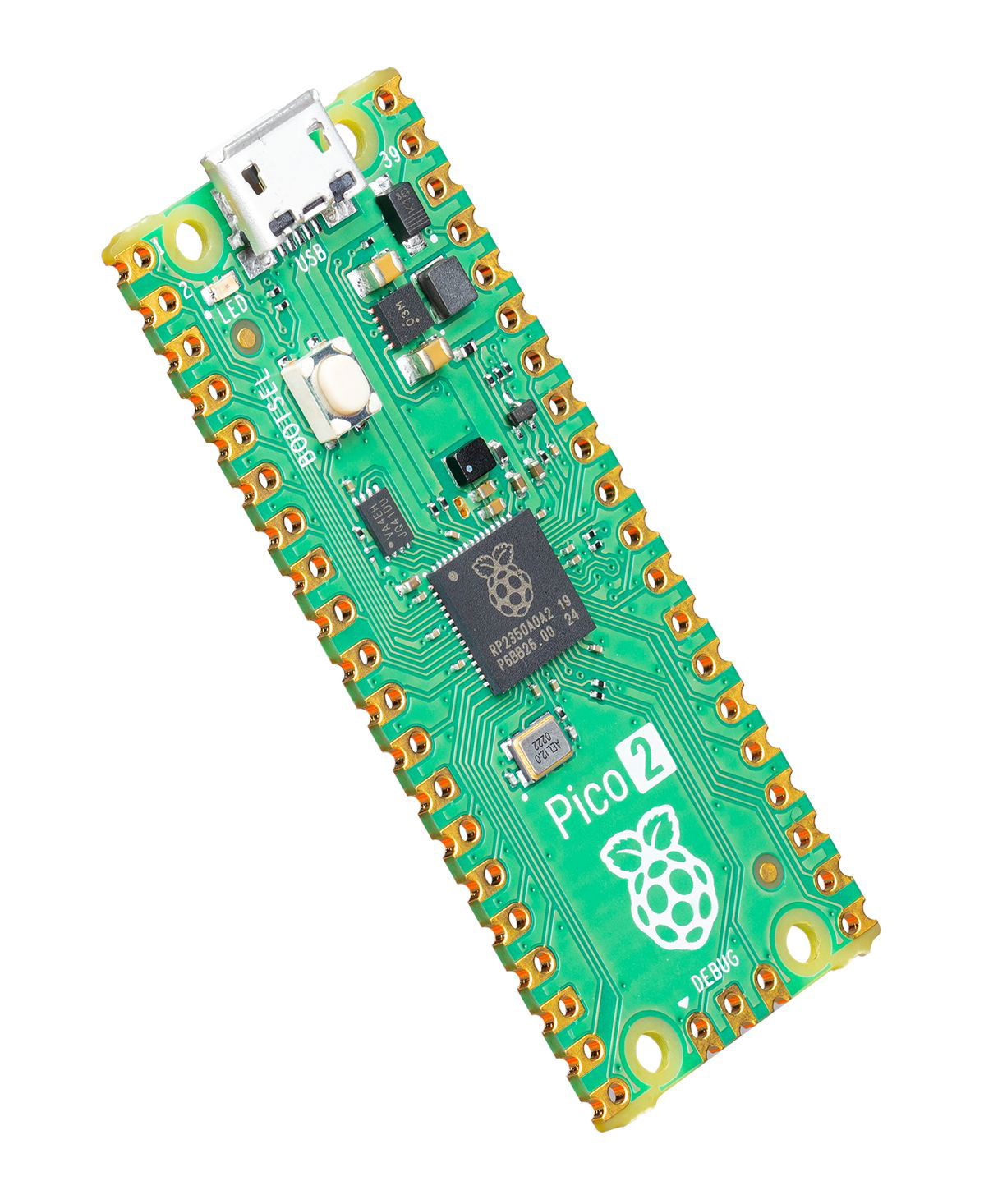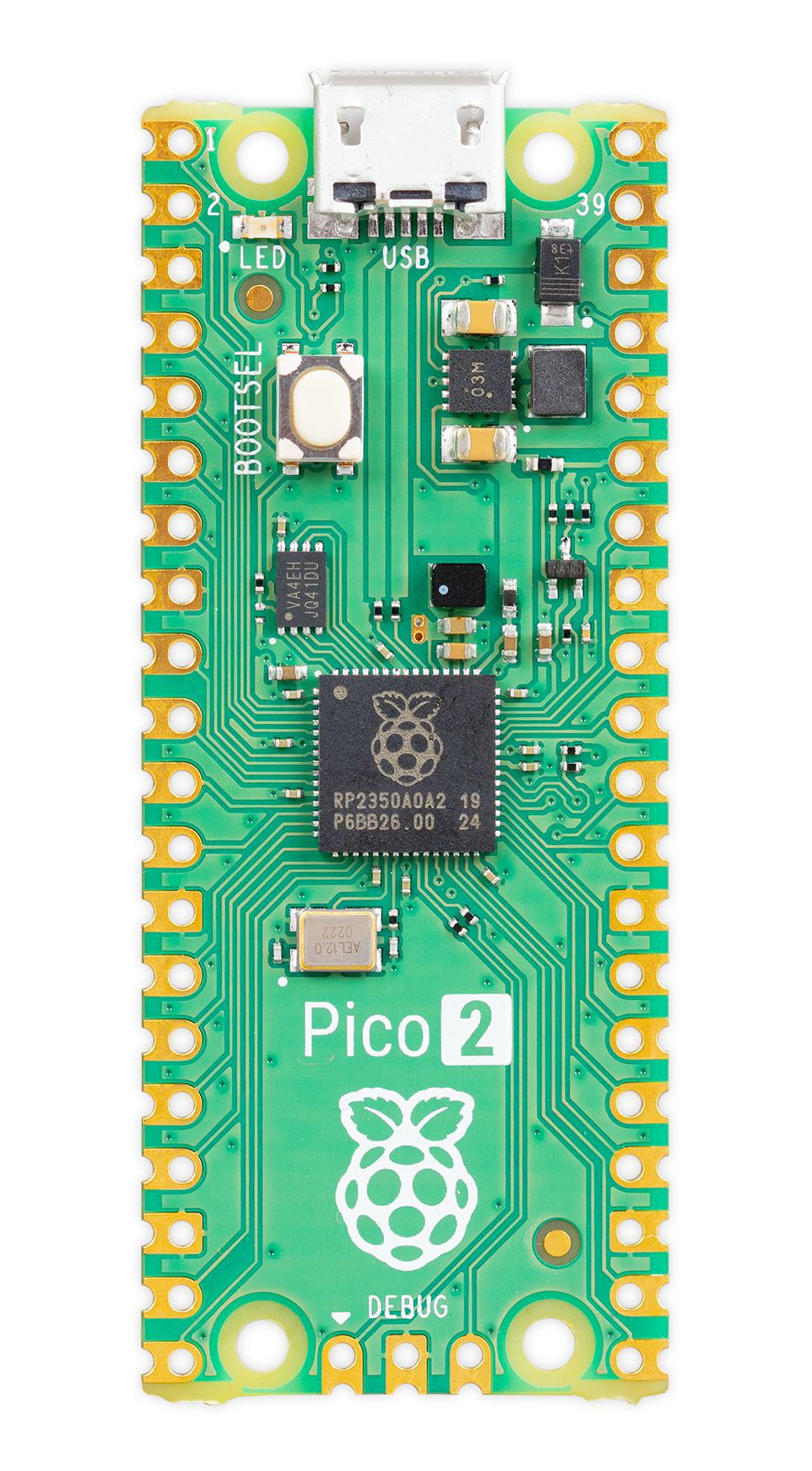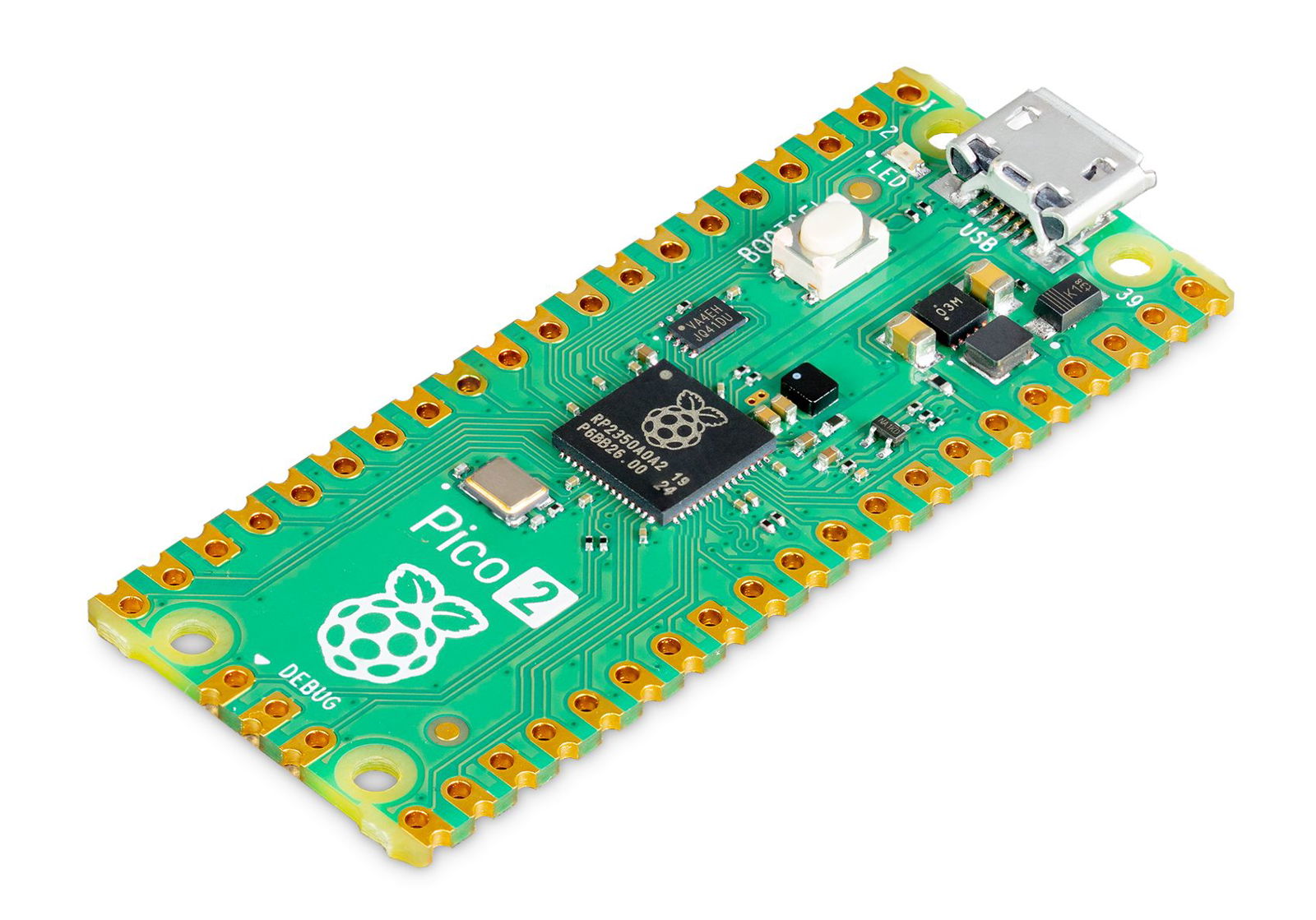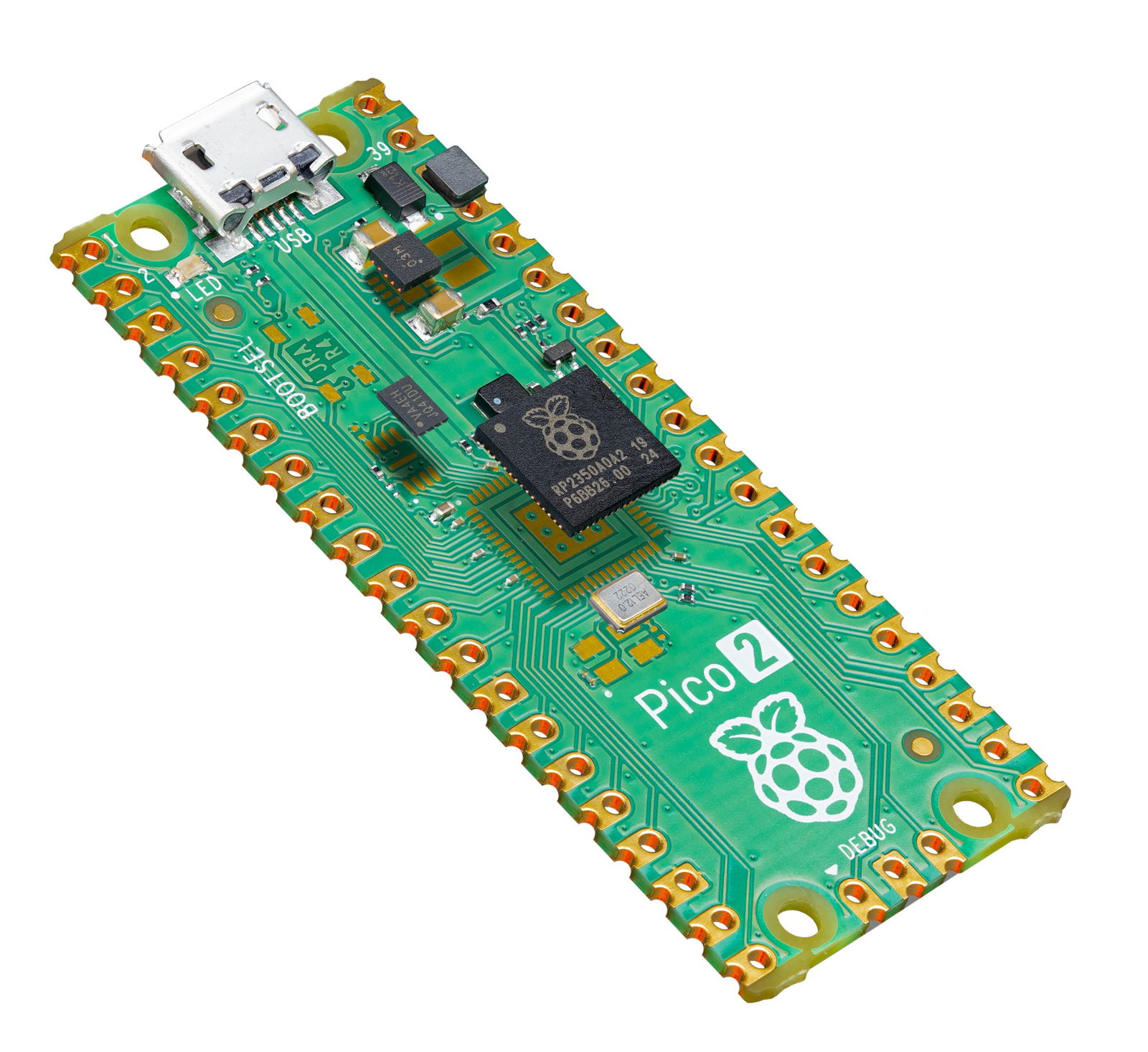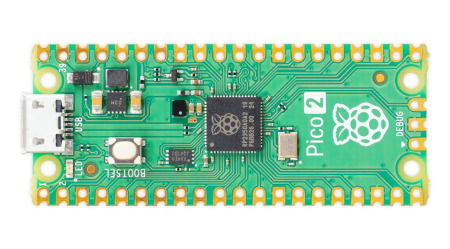Product description: Raspberry Pi Pico 2 - RP2350 ARM Cortex M33
Raspberry Pi Pico 2 is a compact module with a powerful proprietary Raspberry RP2350 microcontroller, intended for electronics enthusiasts and professionals. The new RP2350 , part of the RP235x platform, is the heart of the device. It is a dual-core ARM Cortex M33 -based system clocked at 150 MHz, providing greater computing power and programming flexibility. The module has 520 kB of SRAM memory , which enables faster data processing and greater application possibilities. It also comes with 4MB of QSPI Flash memory , which is twice the size of the Raspberry Pi Pico . With PSRAM support and modern features such as Arm TrustZone , OTP security and Secure Boot, Pico 2 offers advanced security capabilities. Raspberry Pi Pico 2 is programmed in C/C++ and MicroPython via the microUSB connector.
Special features of the module
- High Performance: Dual-core ARM Cortex M33 clocked at 150MHz offers higher performance compared to the previous model.
- Increased memory: 520 KB SRAM and 4 MB QSPI Flash provide more data and code storage resources.
- Security: Support for Arm TrustZone, OTP and Secure Boot enable advanced application security.
- PSRAM and XIP QSPI v2 support: allows memory expansion and efficient code execution from Flash memory.
Pinouts of the Raspberry Pi Pico 2 module
Raspberry Pi Pico 2 has 26 universal GPIO pins , including 4 for ADC, operating with a voltage of up to 5 V, which facilitates integration with a wide range of sensors and peripheral devices. These include interfaces such as: 2x SPI, 2x I2C, 2x UART, ADC, PWM and USB 1.1 . The module also has 3 PIO v2 blocks, which allows you to easily create custom digital interfaces.
Raspberry Pi Pico 2 power supply
The module has a built-in microUSB port, which is used for both power supply and communication of the Raspberry Pi Pico 2 board with the computer. The board requires 5 V power supply for proper operation. The board can also be powered from the VSYS pin with a voltage from 1.8 V to 5.5 V , using an external power source, e.g. a 3.7 V Li-Pol battery or 3x AA batteries .
|
The logical part of the Raspberry Pi Pico works with a voltage of 3.3 V. |
Raspberry Pi Pico programming
Raspberry Pi Pico programming can be performed in C/C++ and MicroPython. To upload the program to the board, press and hold the BOOTSEL button, and then connect the Raspberry Pi Pico to the computer using a microUSB cable. The module will be detected as a USB mass memory, to which you should drag and drop the program file. The manufacturer provides an SDK (Software Development Kit) for the C/C++ and MicroPython programming languages, which can be found in the useful links below.
Comparison of Raspberry Pi Pico and Raspberry Pi Pico 2 models
| Parameter | Raspberry Pi Pico | Raspberry Pi Pico 2 |
|---|---|---|
| System | Raspberry Pi RP2040 | Raspberry Pi RP2350 |
| Core | ARM Cortex-M0+ Dual-Core 133MHz | ARM Cortex-M33 Dual-Core 150MHz |
| SRAM memory | 264 kB | 520 kB |
| Flash memory | 2 MB | 4 MB |
| Derivations | 40-pin / 23 digital GPIO + 3 ADC pins | 40-pin / 26 GPIO digital + 4 ADC pins |
| Interfaces | 2x UART, 2x I2C, 2x SPI, up to 16 PWM channels, 8x PIO | 2x UART, 2x I2C, 2x SPI, up to 24 PWM channels, 12x PIO |
| Supply voltage | 5V (USB) | 5V (USB) |
| Operating voltage of the logical part | 3.3V | 3.3V |
| Power/data connector | microUSB | microUSB |
| Dimensions | 51 x 21 mm | 51 x 21 mm |
Raspberry Pi Pico 2 specifications
- Microcontroller: RP2350
- Processor: dual Arm Cortex-M33 or dual RISC-V Hazard3
- Clock: 150 MHz
- SRAM memory: 520 kB
- Flash memory: 4 MB
- Interfaces:
- 2x UART
- 2x SPI
- 2x I2C
- 24x PWM (limited to 16 PWM)
- 1x USB 1.1 and PHY
- 12x PIO
- Input voltage: 1.8V to 5.5V DC
- Operating temperature: from -20°C to 85°C
- Dimensions: 51 x 21 mm
